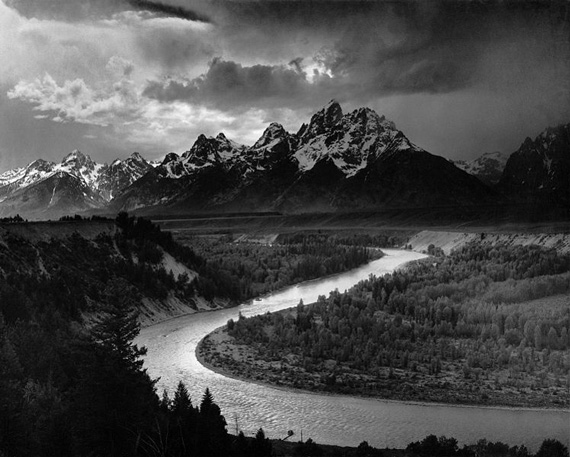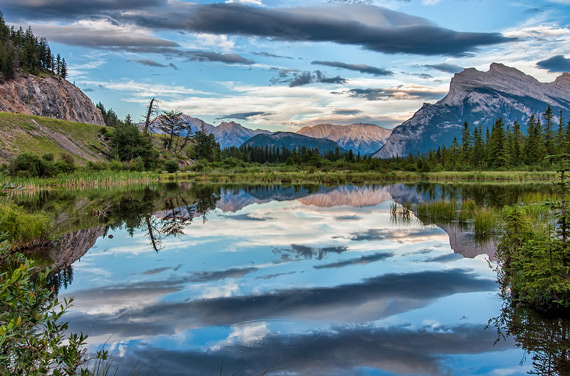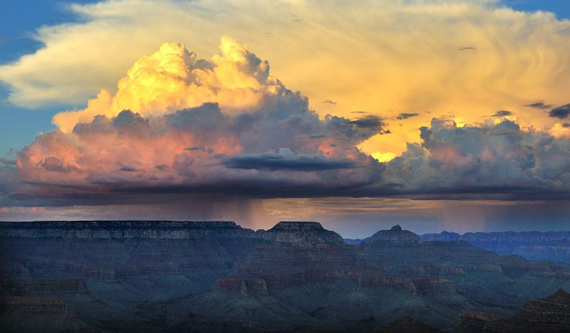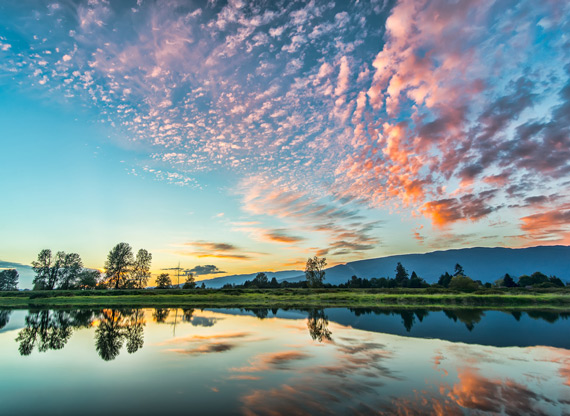From the time that I first began to photograph, one subject that always interested me was clouds. I have always loved the old black and white photographs of Ansel Adams and have admired not only his landscapes, but also the way the landscapes were made spectacular by the cloud cover in the scene. Adams was a master of both composition and working in the darkroom to burn and dodge to make sure that all areas of the photograph were exposed properly. This became so apparent in the areas of his subjects where there was cloud cover. He really brought out the subtle contrasts between the light and dark areas of a cloud scene.
Filters
The use of filters can help the photographer emphasize these differences. A UV filter is a great tool for cutting through haze and improving clarity. A polarizing filter is perhaps even better to isolate the different areas of the clouds and highlight their features. When doing black and white photography, a red filter is a plus to use to make the clouds really stand out and appear bolder.
Timing
A good time to photograph cumulus clouds is both before and after a storm. In California where I live, high clouds normally precede an approaching storm front, followed by more and more cumulus clouds as the cloud cover drops lower and the clouds thicken. At any time during this process, great opportunities for photographs exist. Here in California and other desert areas during the summer monsoonal rain season, thunderheads often begin to build up over the mountain areas. These gigantic cloud formations stretching thousands of feet into the air are particularly beautiful to photograph as the sunlight plays upon their different features.
Tripod
Always use a sturdy tripod so that there is no camera movement. The evening is a great time to photograph thunderheads, as the light at this time gives them a beautiful reddish glow. Also, scattered clouds at just the right particular height take on some beautiful, warm red-to-fuchsia colors.
I love to photograph clouds that are categorized as linear ventricular. These clouds are long horizontally and have the shape of a flying saucer. They, too, are often found during the monsoonal season hanging over mountainous regions.
Many times, a plain or even boring subject can be greatly offset and made to look interesting and exciting when there are beautiful cloud formations in the scene. A beautiful, clear day may be a great time to photograph, but if you have time, wait for some clouds!
About the Author:
My name is James Newton (FollowPhotography). I’ve been interested in photography since the 1970’s and it is one of my passions. I’ve worked for two of the local newspapers as a free-lance photographer and have been on assignment for Inside Sports Magazine. I love all types of photography but my favorite subject is people. I’m fortunate to be married to someone who has the same passion for photography that I have. We love to spend our free time discovering new places in our local and elsewhere to photograph.
Like This Article?
Don't Miss The Next One!
Join over 100,000 photographers of all experience levels who receive our free photography tips and articles to stay current:










I totally agree! Dramatic clouds make make a huge impact.
“I love to photograph clouds that are categorized as linear ventricular.”. Actually those are linear lentitcular clouds. Spell check may have misspelled it for you. Ventricles are spaces in the heart and brain. Lenticular means lens shaped.
Good article. I’ll give the polarizer a try.
Great article James, I completely agree with you, few photographs outdoors work without clouds. Because of this, I wrote a web app to help me find when great clouds will occur, I hope you find it useful:
https://www.getoutcast.com/forecast/photo-clouds